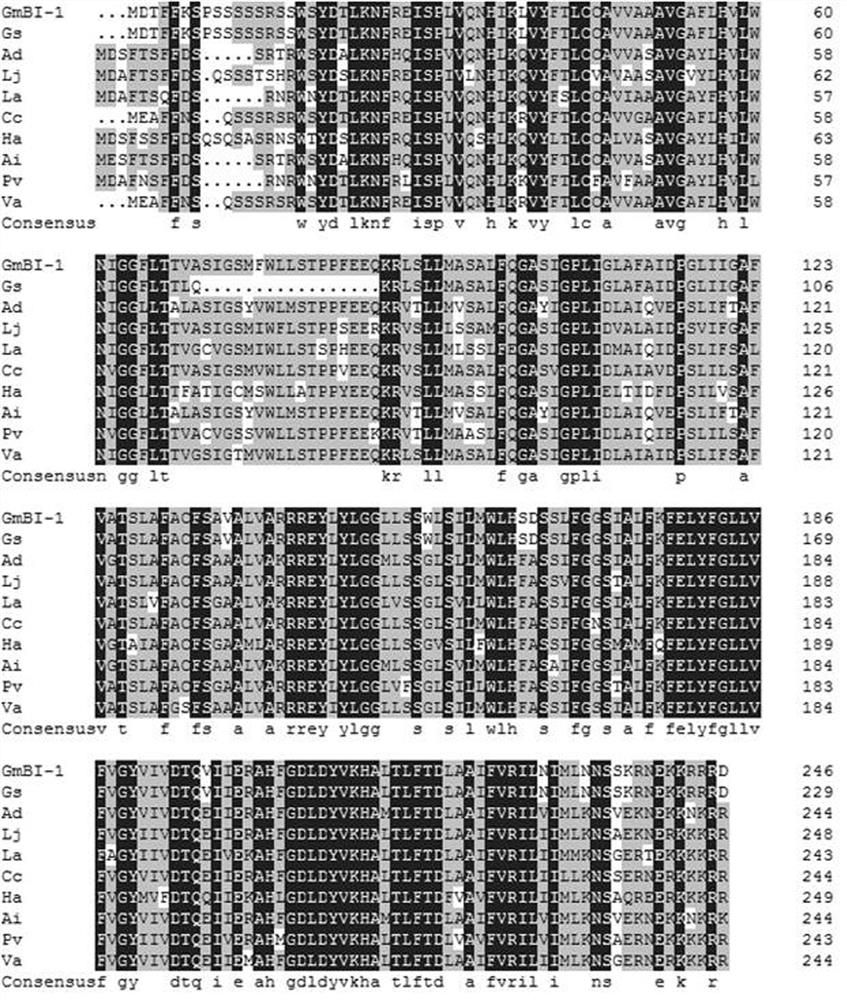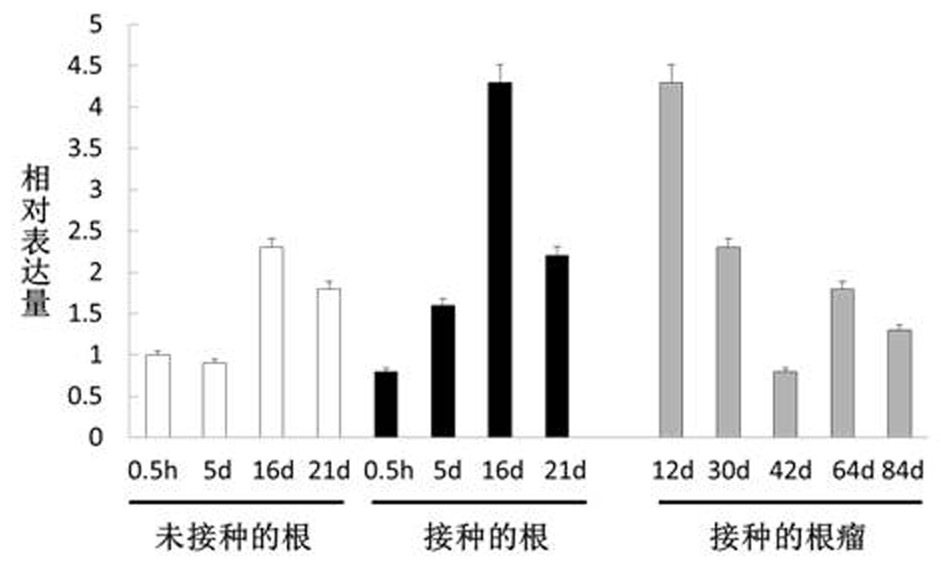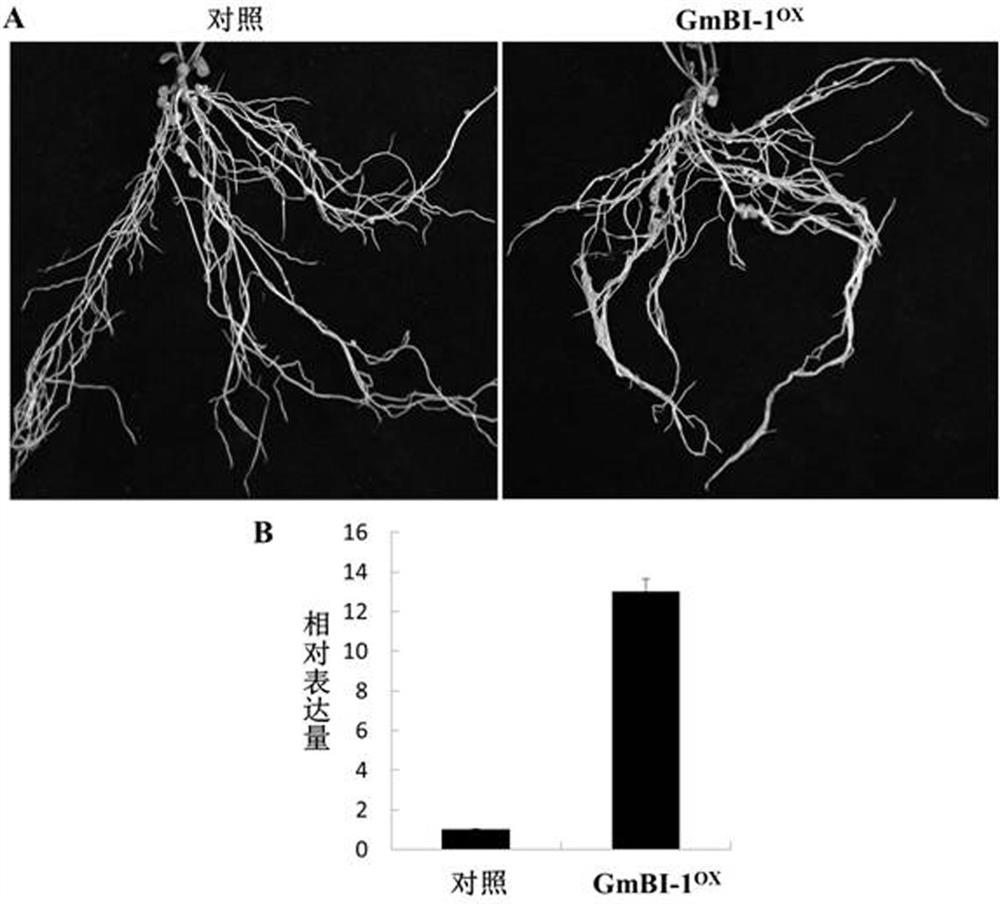Soybean bi-1 gene and its application
A technology of BI-1 and gene, which is applied in the field of cell apoptosis inhibitor BI-1 gene and its application, can solve the problems of unreported functional research, few separation and identification, etc., to reduce chemical fertilizers, strengthen nitrogen fixation ability, and increase root nodules The effect of the number of
- Summary
- Abstract
- Description
- Claims
- Application Information
AI Technical Summary
Problems solved by technology
Method used
Image
Examples
Embodiment 1
[0032] A method for preparing the apoptosis inhibitor GmBI-1 gene involved in symbiotic nodulation of leguminous plants, the steps of which are:
[0033] Cloning of the candidate gene GmBI-1: the fusion of the intramembrane kinase domain GmNFR1α-pk of the nodulation factor receptor protein GmNFR1α of the leguminous plant soybean and the yeast protein expression vector pGBKT7 was used as the bait plasmid, and the soybean was screened by the method of yeast two-hybrid AD-cDNA library, after the colonies grown on the SD / -Leu-Trp-Ade-His (auxotrophic yeast medium) plate were verified by rotation, the plasmid was extracted from the positive transformant and sequenced to obtain GmBI -1 gene, its sequence is the nucleotide sequence shown in SEQ NO:1. The implementation steps are preparation of yeast competent cells by LiAc method, yeast transformation, and library screening, as follows:
[0034] (1) Streak the frozen yeast Y187 (purchased from clontech company) on the YPDA plate fro...
Embodiment 2
[0086] A kind of application of the apoptosis suppressing factor GmBI-1 gene participating in the symbiotic nodulation of legumes in regulating the number of root nodules of legumes (Lotus japonicus, milk vetch, alfalfa, soybean and peanut), the steps are:
[0087] A. Detection of tissue-specific expression of GmBI-1 in soybean:
[0088] Using cultivated soybean W82 as material, harvest soybean root tissues at different times before and after inoculation, and root nodules at 12, 30, 42, 64 and 84 days after inoculation, and extract total RNA from different tissues at different times (Trizol reagent, purchased from Invitrogen Corporation ), and then use fluorescent quantitative PCR technology to detect its expression (attached figure 2 shown). The specific implementation steps are: reverse transcribe the extracted total RNA into cDNA, use the kit PrimeScriptTM RT reagent Kit (Perfect RealTime) for the synthesis of the first strand of cDNA, reverse transcribe 500ng Total RNA i...
Embodiment 3
[0119] Embodiment 3 is basically the same as Embodiment 2, the difference is that
[0120] B. Construction and genetic transformation of GmBI-1 gene overexpression vector:
[0121] In concrete implementation step (1), plant material cultivation is to germinate alfalfa 5 days in advance respectively; In step (7), rhizobium inoculation is alfalfa Rhizobium Sinorhizobium meliloti 1021 (this bacterial strain is the bacterial strain that has announced in the world, Juan etc., Comparison of Developmental and Stress-Induced Nodule Senescence in Medicagot runcatula. Plant Physiol, 152:1574-1584, 2010).
PUM
 Login to View More
Login to View More Abstract
Description
Claims
Application Information
 Login to View More
Login to View More - R&D
- Intellectual Property
- Life Sciences
- Materials
- Tech Scout
- Unparalleled Data Quality
- Higher Quality Content
- 60% Fewer Hallucinations
Browse by: Latest US Patents, China's latest patents, Technical Efficacy Thesaurus, Application Domain, Technology Topic, Popular Technical Reports.
© 2025 PatSnap. All rights reserved.Legal|Privacy policy|Modern Slavery Act Transparency Statement|Sitemap|About US| Contact US: help@patsnap.com



